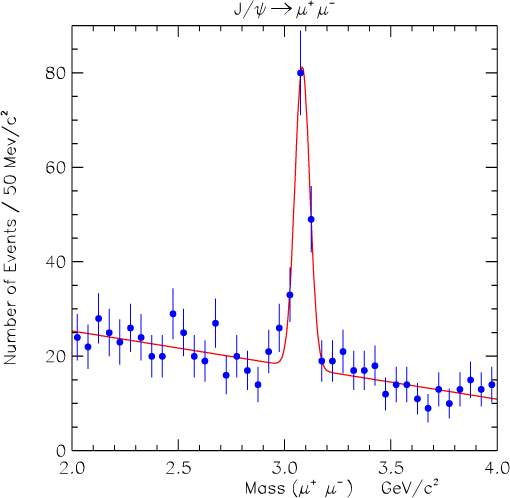The CDF collaboration extracts its first J/psi signal from a subset of the data collected this June

J/psi's are very unstable particles which decay almost immediately after being
produced. Very frequently they decay in two other particles called muons. Such
muons have the same electric charge as the electron and are very penetrating. We
identify them by placing charged particle detectors after a lot of particle
absorbing material. When these detectors fire, we understand that it is most
likely a muon, because another type of charged particle would have been absorbed
with high probability.
Several important physics measurements rely on data events containing J/psi's.
CDF plans to collect several million such events by the end of run IIa.
The difficult part is the selection of the J/psi's during data taking. We
call this process triggering. The Tevatron particle beams cross each other in
the center of CDF approximatly 2.5 million times every second and almost every
time this collision produces several additional particles. Practical reasons
however limit to about 50 per second the number of collisions whose information
can be stored for further analysis on magnetic tape. Our trigger system has to
decide in approximately 5 millionths of a second if the event contains muons or
not. If we make a mistake at this stage the interesting event is permanently
lost.
By observing a J/psi signal we have now a clear proof that our particle
detectors work and that an important part of our VERY complex trigger system is
functioning properly. This is a fundamental prerequisite in order to be able to
collect the millions of J/psi particles needed to do a lot of very exciting
physics.
CDF public webpages
|